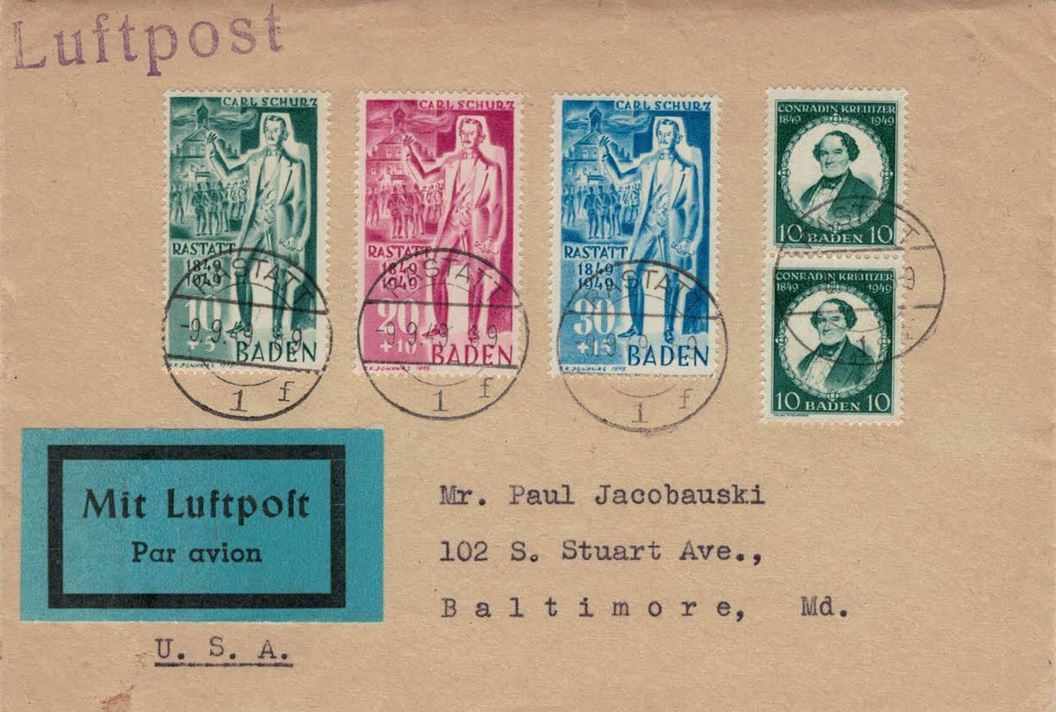 Today’s cover of the month comes from Baden / Germany and was postmarked in Rastatt on 9.9.1949. It went by airmail to Baltimore and was franked postage due (airmail without zoning 20.10.48-30.11.50; 1st weight 0-10g = 80 Pfg). The 3 stamps with Carl Schurz for the 100th anniversary of the Baden Revolution in the denominations 10, 20 and 30 Pfenning appeared on 24.8.1949, the one with the portrait of C. Kreutzer at 10 Pfennig on 27.8.1949. All stamps affixed on this cover were valid until 31.3.1950. The design of the Carl Schurz stamps was by the Lithuanian artist Vytautas Kazimieras Jonynas, while the C. Kreutzer stamp was designed by Heinz Thorweger.
Today’s cover of the month comes from Baden / Germany and was postmarked in Rastatt on 9.9.1949. It went by airmail to Baltimore and was franked postage due (airmail without zoning 20.10.48-30.11.50; 1st weight 0-10g = 80 Pfg). The 3 stamps with Carl Schurz for the 100th anniversary of the Baden Revolution in the denominations 10, 20 and 30 Pfenning appeared on 24.8.1949, the one with the portrait of C. Kreutzer at 10 Pfennig on 27.8.1949. All stamps affixed on this cover were valid until 31.3.1950. The design of the Carl Schurz stamps was by the Lithuanian artist Vytautas Kazimieras Jonynas, while the C. Kreutzer stamp was designed by Heinz Thorweger.
 Actually, Baden did not exist as an independent country at that time, but these are stamps of the French occupation zone after World War II. After World War II, southwestern Germany was under French administration from April 1945 as the French Occupation Zone. From December 1945, a new series of 13 definitive stamps was issued. From spring 1947, local issues of the four regions Baden, Württemberg-Hohenzollern and Rhineland-Palatinate as well as Saarland followed. In 1947, there were again separate stamps in the French occupation zone for Baden and Württemberg for a short time, until the founding of the Federal Republic in 1949. For Baden (South Baden), 23 stamp motifs appeared during this period. In addition to rather non-political landscape motifs of the Black Forest and Lake Constance, of Freiburg and Rastatt, there are stamps with persons untainted by National Socialism who were particularly important to the French – among them Carl Schurz and Conradin Kreutzer.
Actually, Baden did not exist as an independent country at that time, but these are stamps of the French occupation zone after World War II. After World War II, southwestern Germany was under French administration from April 1945 as the French Occupation Zone. From December 1945, a new series of 13 definitive stamps was issued. From spring 1947, local issues of the four regions Baden, Württemberg-Hohenzollern and Rhineland-Palatinate as well as Saarland followed. In 1947, there were again separate stamps in the French occupation zone for Baden and Württemberg for a short time, until the founding of the Federal Republic in 1949. For Baden (South Baden), 23 stamp motifs appeared during this period. In addition to rather non-political landscape motifs of the Black Forest and Lake Constance, of Freiburg and Rastatt, there are stamps with persons untainted by National Socialism who were particularly important to the French – among them Carl Schurz and Conradin Kreutzer.
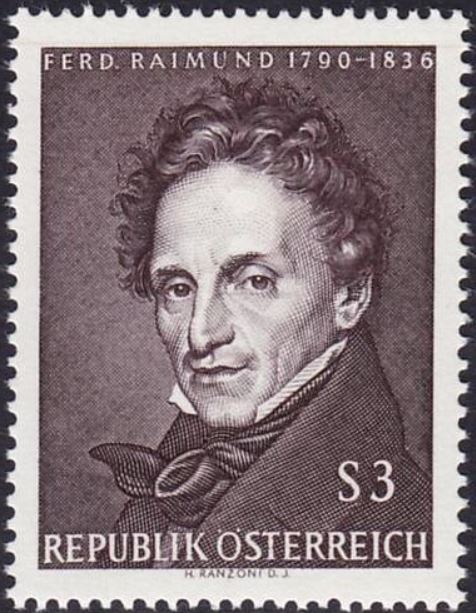
Ferdinand Raimund
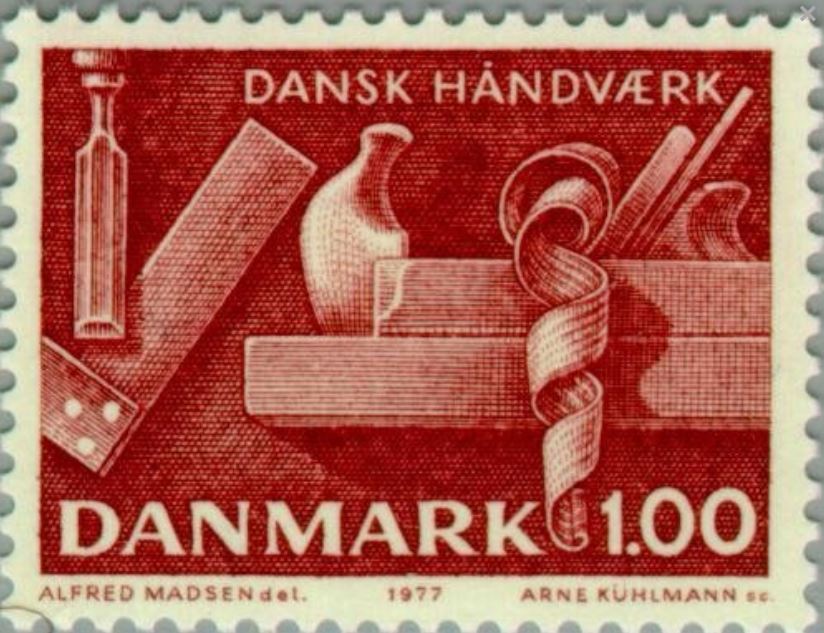
The Hobellied is probably one of the best known songs by Kreutzer.
Now to the contents of the tokens: Conradin Kreutzer was a German musician (1780-1849) and a typical representative of early Romanticism and musical Biedermeier. His works, which are still known today, include the opera Das Nachtlager in Granada and the incidental music for Ferdinand Raimund’s Verschwender – especially the Hobellied. I always enjoyed singing the first verse of this song when I was a teenager (listen to Hans Moser’s interpretation on YouTube) and it is probably still relevant today (Ludwig Hirsch has an interesting version of the song for young readers on YouTube and it would also fit the Flint article by Clemens in Angewandte Philatelie). It is not entirely clear to me from his biography why this particular composer was particularly important to the French, but perhaps some reader knows.
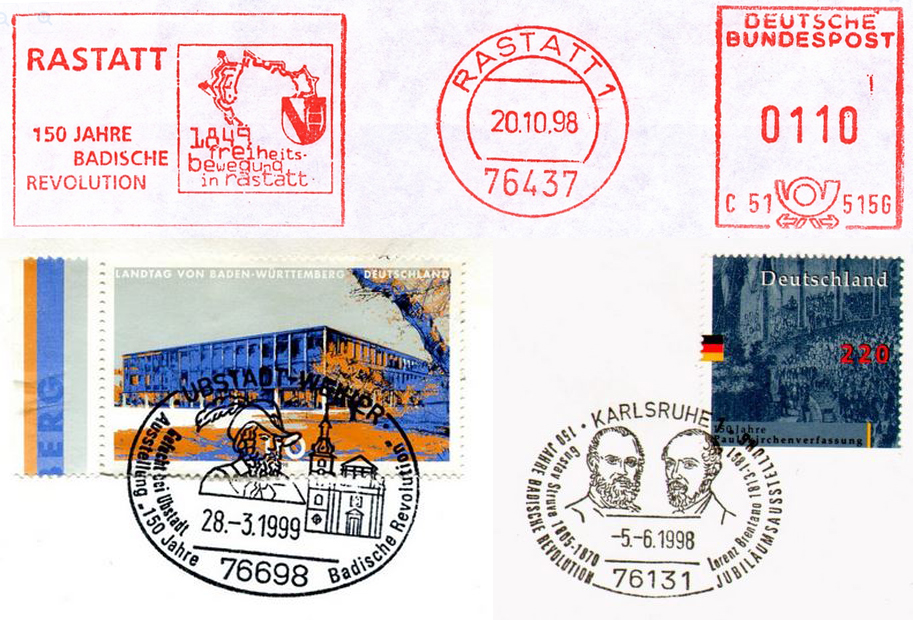
The Baden Revolution led by Hecker, Struve and Bretano was bloodily put down in Rastatt. C. Schurz could escape
Carl Schurz (1829 -1906), on the other hand, was a revolutionary who actively participated in the Baden Revolution of 1848/49. In 1849, the year of the revolution, he was a twenty-year-old adjutant to the commander-in-chief of the Palatine People’s Army in Rastatt when it was besieged by Prussian troops. After the fortress in Raststatt could no longer be held, he made a remarkable escape from the fortress town through the sewers. He found his exile in Switzerland, Paris and London. However, he returned to Germany once again for the spectacular liberation of his professor and friend Gottfried Kinkel from the Spandau penitentiary. Despite many sympathies he received, he was sentenced to death in absentia by a Prussian military court. A return to Baden was thus no longer possible.
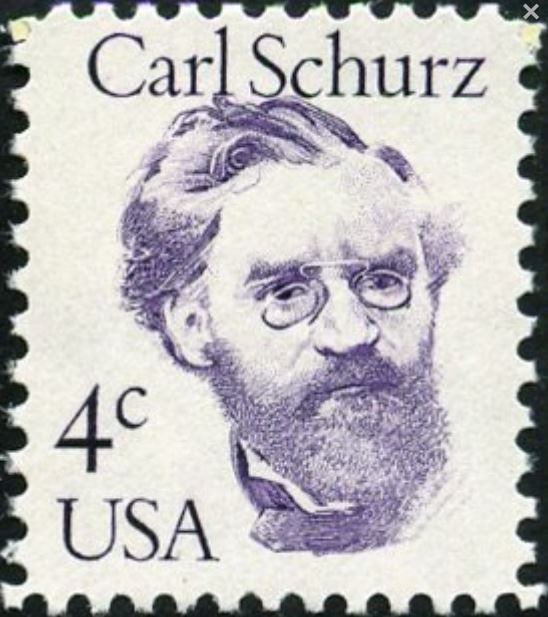
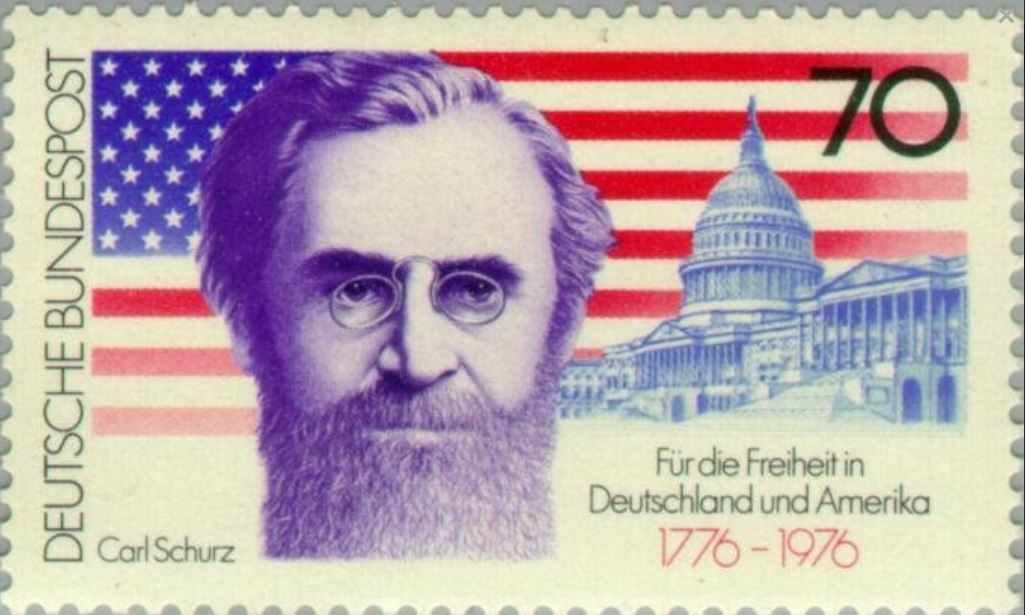
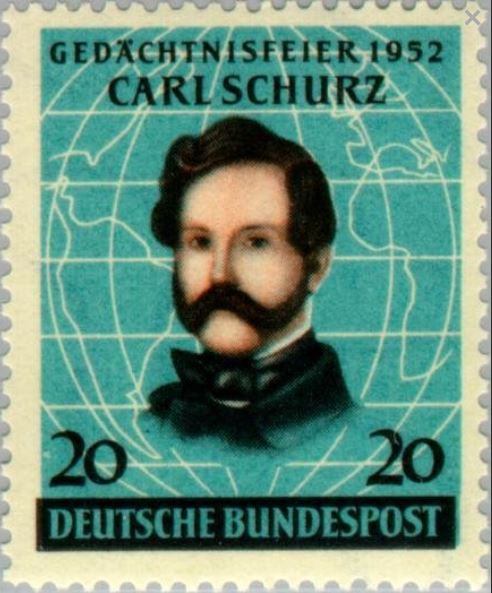
He emigrated to America, like so many of his comrades-in-arms in the Baden Revolution. As a convinced advocate of the demand for freedom for all and equality of rights, he worked there as a journalist, and eventually joined Abraham Lincoln’s party the Republicans – among other things also because of the fight against slavery. He became a general in the wars of secession, senator from Missouri, and secretary of the interior under President Rutherford B. Hayes . He also served one year as U.S. ambassador to Spain. Over the decades, he achieved incredible notoriety in his new homeland, but it did not imply that everyone loved him. He is also accused today of having thrown many of his ideals overboard at the end of his career as interior minister, and of having acted extremely unhappily as such. In any case, a colorful figure about whom much more could be told on the basis of the stamp.
